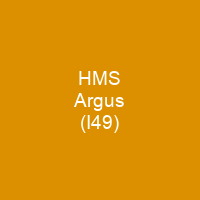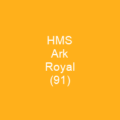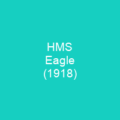HMS Argus was a British aircraft carrier that served in the Royal Navy from 1918 to 1944. She was converted from an ocean liner that was under construction when the First World War began. She became the first example of the standard pattern of aircraft carrier, with a full-length flight deck that allowed wheeled aircraft to take off and land. The ship was too top-heavy as originally built and had to be modified to improve her stability.
About HMS Argus (I49) in brief

In 1912, William Beardmore proposed a design that had two islands with the flight deck running between them. Each island contained one funnel; a large net could be strung between them to stop out-of-control aircraft, and the bridge was mounted on top of the bracing, which left a clear height of 20 feet for the aircraft. In November 1916, the design was tested in a wind tunnel by the National Physical Laboratory to evaluate the turbulence caused by the twin islands. They were found to cause problems, but no changes were made to cause them. In April 1918, Argus ordered to bemodified to a flush-deck configuration after sea trials revealed severe problems caused by her superstructure. During the conversion, she was given a bridge underneath her flight deck, extending from side to side, and she was fitted with a retractable retractable pilot house in the middle of the flightdeck for use when not operating aircraft. By 1942, the Navy was very short of aircraft carriers and Argus was pressed into front-line service despite her lack of speed and armament. In June, she participated in Operation Harpoon, providing air cover for the Malta-bound convoy. In November, she provided air cover during Operation Torch, the invasion of French North Africa and was slightly damaged by a bomb. After returning to the UK for repairs, Argu was used again for deck-landing practice until late September 1944.
You want to know more about HMS Argus (I49)?
This page is based on the article HMS Argus (I49) published in Wikipedia (as of Nov. 03, 2020) and was automatically summarized using artificial intelligence.







